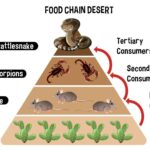Imagine Hawaii: pristine beaches, vibrant rainforests, and majestic mountains. This idyllic picture, however, is threatened by an insidious invader: the small Indian mongoose. Introduced over a century ago to combat rats in sugarcane fields, this seemingly harmless creature has become a formidable force decimating Hawaii’s delicate ecosystem.
The Mongoose’s Unintended Impact
Originally brought to Hawaii in 1883, the small Indian mongoose (Herpestes javanicus) was intended to be a solution to the rat problem plaguing the sugar cane industry. However, this seemingly well-intentioned act backfired dramatically. Instead of controlling rats, the mongooses, active during the day, largely ignored the nocturnal rodents, turning instead to an easier target: Hawaii’s native wildlife.
The consequences have been devastating. Mongooses, with their diverse diet and adaptability, have thrived in Hawaii’s varied environments, from lush forests to coastal areas. Unfortunately, their presence has had a catastrophic impact on the islands’ vulnerable species. Studies suggest that Hawaiian geese, for example, have experienced a staggering loss of up to 77% of their eggs due to mongoose predation. This trend of predation extends to other ground-dwelling creatures, profoundly disrupting the delicate balance of Hawaii’s ecosystems.
A Persistent Threat to Biodiversity
Today, the Hawaiian mongoose stands as a stark reminder of the unintended consequences of introducing non-native species. Their impact extends beyond predation. Mongooses compete with native predators, like owls, for food and resources, further straining the delicate ecological web. Their presence has contributed to the decline of numerous endemic species, pushing some, like the Hawaiian goose (Nēnē) and the Hawaiian crow (ʻAlalā), closer to extinction.
Controlling the mongoose population has proven to be a herculean task. Their ability to adapt to diverse habitats, their rapid reproduction rates, and their elusive behavior make eradication efforts extremely challenging. Current management strategies focus on protecting the most vulnerable species through habitat restoration and implementing predator control measures in critical areas.
The Debate Over Management and a Call for Vigilance
The question of how to best manage the Hawaiian mongoose remains a topic of ongoing debate. Some experts advocate for aggressive population control measures, while others urge caution, emphasizing the need to consider the ethical implications and potential unintended consequences for other species.
Despite their detrimental impact, mongooses continue to attract the curiosity of visitors. It’s important to remember that these animals, while seemingly benign, can carry diseases harmful to humans, such as murine typhus and leptospirosis. It’s crucial to admire them from a distance and take necessary precautions to prevent the spread of disease.
The story of the Hawaiian mongoose stands as a powerful lesson in conservation. It underscores the critical importance of careful consideration and thorough research before introducing any new species, no matter how beneficial the initial intention may appear. The battle against the mongoose in Hawaii continues, serving as a global reminder of the interconnectedness of ecosystems and the profound, often unforeseen, consequences of human actions on the environment.
If you’re looking for a unique and awe-inspiring pilgrimage site, then look no further than the Hill of the Crosses in Lithuania.
- Amazing March Fun Facts: Unveiling History & Celebrations - April 15, 2025
- Master how to write height: A complete guide - April 15, 2025
- How High Are Your Standards Test: Find Your Perfect Match Now - April 15, 2025
















